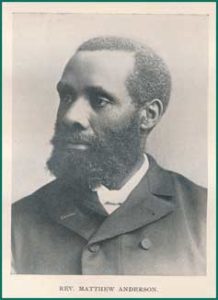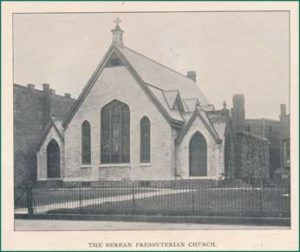Dr. John Gerstner, the esteemed Professor of Church History at the Pittsburgh Theological Seminary, for many years persisted in his allegiance to his denomination. Despite the urgings of friends, he continued to hope for better days for his Church. But finally when one matter in particular came to the fore, the conclusion was inescapable, and Dr. Gerstner drafted the following statement [emphasis added to highlight the noted date]:—
THE APOSTASY OF THE UNITED PRESBYTERIAN CHURCH IN THE UNITED STATES OF AMERICA
by Dr. John Gerstner
The United Presbyterian Church in The United States of America became apostate, officially on January 26, 1981 turning away from adherence to the Lord Jesus Christ by permitting in its ministry a denier of that same Lord Jesus Christ. This was done by the decision of the Permanent Judicial Commission of The General Assembly of The United Presbyterian Church in The United States of America. It upheld National Capital Union Presbytery’s approval of Mansfield Kaseman for ministry. The Synod of The Piedmont had become apostate for the same reason, July 8, 1980. At Presbytery, Synod, and General Assembly levels, Mr. Kaseman had been shown to be guilty of denying or refusing to affirm at least four essentials of the Christian religion: the sinlessness, bodily resurrection, vicarious atonement, and deity of Jesus Christ.
Documents of the six trials, two each by Presbytery and the Permanent Judicial Commissions of Synod and General Assembly (1979 and 1980) are available for those who would inform themselves in depth. This paper concentrates on the 1981 decision of The Permanent Judicial Commission of The General Assembly which finally, officially, produced the legal and constitutional apostasy of The United Presbyterian Church denomination. First, after brief statement of the evidence and argument that Mr. Kaseman did indeed deny or refuse to affirm indispensable Christian doctrine, we present second, a somewhat longer critique of The Permanent Judicial Commission decision of January 26, 1981 substantiating our grave charges that in defending apostasy it made The General Assembly apostate. We then third, explain why this apostate action makes the whole denomination apostate and why, fourth, if The General Assembly does not effectively repudiate this apostasy or begin the process of repudiation, every Christian is obliged to separate from the non-Christian denomination. We conclude with an appendix in the form of a proposal for action at The 193rd General Assembly meeting at Houston, Texas, May 19-27, 1981 which may be taken if apostasy is not there repudiated.
I. The Case Against Kaseman
The substance of the complainants’ case against the National Capital Union Presbytery can be briefly stated. First, the complainants charged that Mr. Kaseman denied or would not affirm the sinlessness of Christ. If Christ was not sinless He could not be the Savior of the world. He would need a Savior Himself. The only response from Kaseman’s defenders was that he was thinking of sinlessness in the sense of frustration. There was no denial that Mr. Kaseman would not affirm Christ’s freedom from all sin.
Second, Mr. Kaseman refused to affirm the bodily resurrection of Jesus Christ. The complainants pointed out that according to I Cor. 15:17, “… if Christ has not been raised, your faith is worthless; you are still in your sins.” (NASV) Paul was speaking in that chapter about the bodily resurrection of Christ. There is no other kind of resurrection than bodily because the soul never does die. The only response ever received was that Kaseman did affirm the “resurrection” (not bodily resurrection). The complainants never denied that Mr. Kaseman affirmed a non-bodily resurrection whatever that may mean.
Third, Mr. Kaseman specifically denied the doctrine of the “vicarious atonement”. No one can question that without Christ’s atonement for our sins there is no possible salvation. The only response that came from the defenders of Mr. Kaseman was that there are other metaphors beside the concept of substitution that describe the death of our Lord. That never was at issue either. The defenders never questioned the allegation that Mr. Kaseman did deny the “vicarious atonement” which is absolutely essential whatever else may also be essential to the doctrine of the atonement.
Fourth, this whole trial first came about in National Capital Union Presbytery when in March of 1979 Mr. Kaseman was asked if he believed that Jesus Christ was God and he answered, “No, obviously No. God is God.” Much discussion followed and much was said and reported in the secular and religious press during the following two years but never did Kaseman ever deny this apostate statement. The Presbytery’s Committee of Representation never said anything to justify Mr. Kaseman. It was once irrelevantly contended that he merely meant to say that Christ was more than God, being man also, but Christ’s humanity was never an issue either. Kaseman denied that Jesus Christ was God. He has never denied the denial. In the second trial before the National Capital Union Presbytery when the same question was put to Mr. Kaseman he refused to answer with a categorical negative as he had before.He also refused to take back his previous statement so that it still stands on the record. He did say at the second interrogation that Jesus Christ is one with God and affirmed belief in the Trinity.
The affirmation (which apparently satisfied the majority of Presbytery) that Christ was one with the deity did not amount to an affirmation of the deity of Jesus Christ. The proof of that is the explanation which Mr. Kaseman offered for denying that Jesus Christ is God. If Jesus Christ were God, he asked, how would he answer the death of God theologians: Who was then minding the universe? This only served to show that Mr. Kaseman did not even understand the doctrine of the Incarnation, much less believe it. He apparently thinks that the doctrine of the incarnation means that God ceased being infinite and omnipresent and became finitized and temporalized in a human being! Having such a grotesque misconception, Mr. Kaseman could not possibly believe that Christ was or is God.
All of these most grave charges have been repeatedly proven by complainants as the documents of the various trials clearly illustrate. They have complained against the National Capital Union Presbytery for its approving Mr. Kaseman in spite of his demonstrated apostasy. Neither the Committee of Representation of the Presbytery nor any of the higher courts that have heard the case have ever refuted these charges. In some instances, including the final trial, there was no attempt to do so. This refusal or inability was in spite of the fact that the complainants have charged apostasy and pled with the higher courts if they could not refute the charges, to set aside the Presbytery’s decision and discipline all courts which have approved it.
- The Permanent Judicial Commission of The General Assembly Decision of January 26, 1981
The final court at the final hearing, (the Permanent Judicial Commission of the General Assembly in the hearing January 24, 1981), falls far short of saving our Church from the apostasy charged. Actually it itself, by tacit compliance, became guilty of the same apostasy. All that the supreme court of our denomination did was affirm how orthodox our Confessions are, while at the same time upholding Presbytery and Synod in approving a man whose unorthodoxy, in at least four essentials of the Christian faith, had been demonstrated.
First of all, . . .
Those interested in reading the entirety of Dr. Gerstner’s treatment of this issue may write to the PCA Historical Center for a digital copy. Address your mail to [archivist (AT) pcahistory /DOT/ org]



